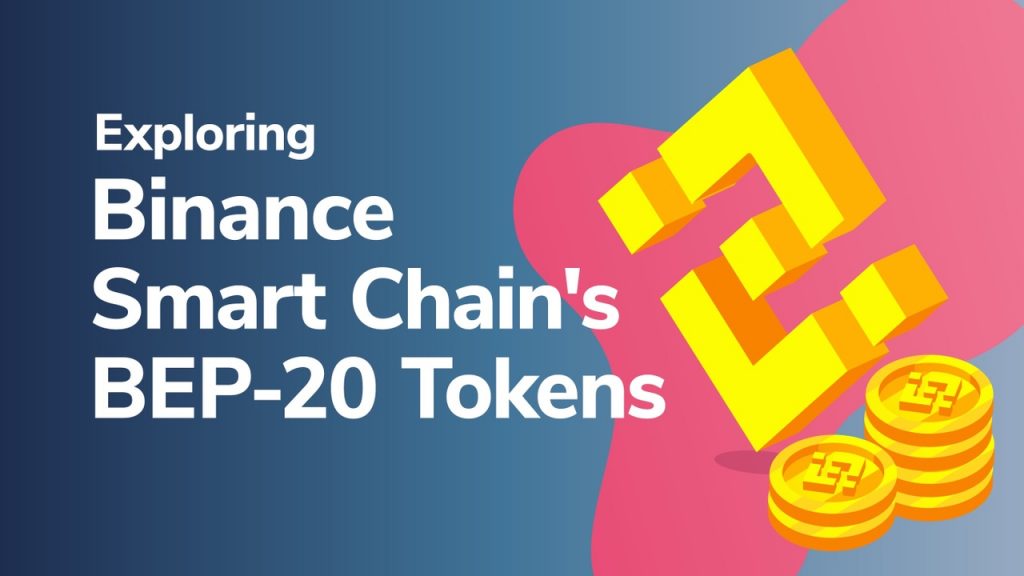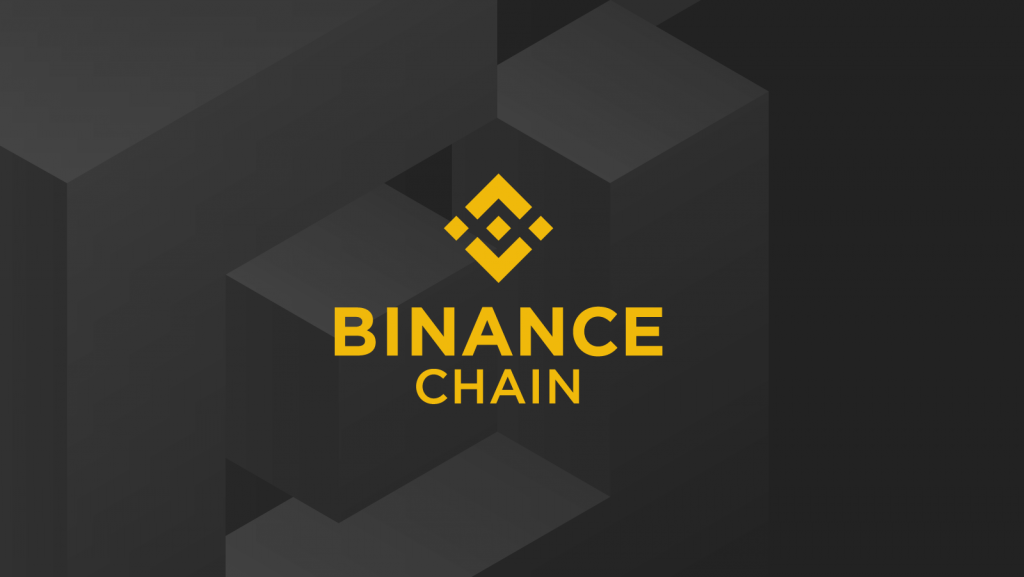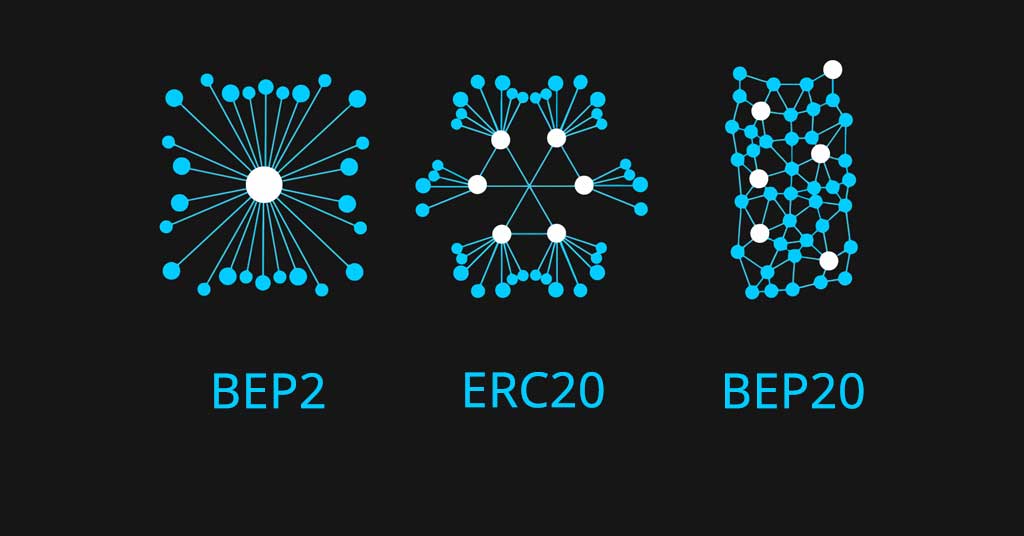
Binance Smart Chain has been all the rage during the past few weeks. In fact, daily transactions on Binance Smart Chain overtook Ethereum last week. In addition to this, Binance Coin (BNB) has struggled for the place as the third-largest crypto by market cap with Tether in the past weeks. As such, it’s high time to take a look at all the DeFi buzz surrounding Binance Smart Chain, and to look closer at Binance Smart Chain’s BEP-20 token.
Those who haven’t been keeping up with the news around Binance Smart Chain might ask themselves, exactly what makes BSC ”smart”? And how does the Binance Smart Chain differ from the regular Binance Chain? Some might be lead to believe that Binance Smart Chain is a successor to Binance Chain, but the truth is a little more complicated. Rather, Binance has a vision where both the Binance Smart Chain and Binance Chain can co-exist, fulfilling different needs.
We’ve previously written about Binance, the Binance DEX, Binance Launchpad, and much more. However, it is high time that we take a closer look at the Binance Smart Chain and, more specifically, the BEP-20 token in comparison to the Binance Chain and BEP-2 token. This article breaks it all down – however, to fully understand the topic, be sure to check out some of the material available on Ivan on Tech Academy. Ivan on Tech Academy is one of the premier blockchain education sites, and offers a wealth of courses on everything from Ethereum tokens to Technical Analysis. Join a community of over 30,000 students, and choose a study plan that suits your needs. What are you waiting for?
What is Binance Chain?
In recent years, Changpeng Zhao’s previously Malta-based (and since 2020 ”headquarterless”) Binance exchange has become much more than merely a cryptocurrency exchange. Binance now consists of an entire cryptocurrency ecosystem, with You will likely know Binance Chain as the blockchain underpinning Binance Coin (BNB). In recent weeks, Binance has been all the rage – however, the renewed interest in Binance has mostly stemmed from the Binance Smart Chain. Nevertheless, to properly understand Binance Smart Chain and the BEP-20 token, we first need to understand Binance Chain and BEP-2.

With that said, Binance Chain was essentially built in order to host the Binance Coin (BNB) token, as well as facilitate transactions on decentralized Binance exchange, or the Binance DEX. The Binance Chain was originally launched by Binance back in April of 2019. The largest dApp on Binance Chain is, predictably, the Binance DEX. Although the Binance Chain works well for this purpose, it does mean the Binance Chain had certain limitations. Namely, Binance Chain does not feature support for smart contracts. Rather, Binance focused on speed, scalability, and prevent network congestion. This high-performance approach means that Binance Chain can support fast trading – but loses a lot of the programmable flexibility of other blockchains, such as the smart contract-compatible Ethereum network.

As such, the Binance Smart Chain was envisioned as a smart contract-compatible extension to the Binance Chain. However, this also entails that the Binance Smart Chain is not an outright replacement for the original Binance Chain. Instead, Binance intends for the two chains to exist and be used in tandem, as they both fulfill different use cases. Although Binance Chain offers quick, non-custodial trading, it sorely lacks when it comes to smart contract functionality – and integrating smart contract functionality would risk congesting Binance Chain.
What is Binance Smart Chain?
This, then, brings us to the Binance Smart Chain. Essentially, Binance Smart Chain (or BSC) is the answer to gaining smart contract functionality without congesting the Binance Chain. Binance Smart Chain also features compatibility with the Ethereum Virtual Machine and brings smart contract functionality to the Binance ecosystem. Moreover, BSC isn’t just some Layer-2 solution – it is its own, independent blockchain – albeit with a likeness to Binance Chain.

In recent weeks, the Ethereum Network has seen massive congestion and high fees. Although this is relatively temporary, as Ethereum’s Layer-2 solutions (Ethereum 2.0) and the transition to an Ethereum Proof-of-Stake consensus mechanism mean Ethereum fees will eventually go down, high fees have crippled some Ethereum-based projects, and have led some to question whether Ethereum really is suitable to underpin as many DeFi projects as it doesn’t. Consequently, the recent Ethereum fee debacle has led to a dramatic upswing for Binance Smart Chain.
In many ways, Binance Smart Chain takes after the Ethereum network. On February 18th, Changpeng Zhao tweeted that ”there are almost 2x more transactions on #BSC [Binance Smart Chain] than on ETH. If you want more users for your dApp, you need to be on #BSC now.” This highlights Binance Smart Chain’s rapid rise in recent weeks. In fact, some are even suggesting that Binance Smart Chain could potentially go on to overtake Ethereum as the ”backbone” of the DeFi ecosystem.

Granted, the entire DeFi industry was essentially built on the Ethereum network. What’s more, the exorbitant Ethereum fees only really show a huge appetite for using Ethereum – in a way, it is nothing but Ethereum’s popularity that is actually driving the network’s high gas prices. At the same time, however, these circumstances create an opportunity for Binance Smart Chain to gain market shares.
What is BEP-20?
So, let’s begin by answering the question,”what is BEP-20”. Put simply, the BEP-20 token standard is a technical specification for the Binance Smart Chain. We’ve previously explained the characteristics of the Binance Smart Chainin that it is smart-contract compatible. In short, Binance Smart Chain is built for decentralized finance (DeFi) and decentralized applications (dApps). Nevertheless, it still needs a token standard, much like the regular Binance Chain does, the Ethereum network does, or any other blockchain.

There is a relatively comprehensive GitHub draft proposal for the specifics of the BEP-20 token standard, for those who want to go into the details of the token standard. With that being said, however, most discussions regarding the BEP-20 token will doubtlessly compare it to another well-known and highly similar token standard – namely the Ethereum-based ERC-20 token. As such, let’s take a look at BEP-20 vs. ERC-20 to understand the Binance Smart Chain token standard better. If you want to see the different available BEP-20 tokens, many of which are wrapped equivalents of other high-profile tokens, be sure to check out BscScan. Moreover, if you want to learn more about the many different Binance Smart Chain projects or other blockchains, you should pay the Ivan on Tech Academy blog a visit! The Ivan on Tech Academy blog features free daily in-depth updates on various cryptocurrency-related topics.
BEP-20 vs. ERC-20
BEP-20 and Ethereum’s ERC-20 tokens are very similar. In most cases, they can be considered as equals, and Binance is not making any sort of stand against ERC-20 tokens as such. In fact, Binance Coin (BNB) started out as an ERC-20 token. However, April 23rd of 2019 marked a transition date where BNB went from an ERC-20 token on the Ethereum network to a BEP-2 token on the Binance Chain. Don’t worry; we’ll go more into the weeds regarding BEP-2 in the next section. When Binance made this switch, Binance CEO Changpeng Zhao stated that ”Binance Coin (BNB) on the Binance Chain is the same as the Ethereum coin (ETH) on the Ethereum network.”

Binance is also working hard to increase interoperability between different blockchains, such as between ERC-20 and BEP-20 tokens. This comes as part of the Binance Bridge Project, which looks to boost interoperability between blockchains. Seeing as Binance Smart Chain is compatible with the Ethereum Virtual Machine (EVM), it is relatively easily compatible with Ethereum tools and Ethereum dApps. All developers have to do is port over their Ethereum-based projects to the Binance Smart Chain. Moreover, this also means that projects like MetaMask can easily be adapted to function with Binance Smart Chain.
Nevertheless, don’t be confused by the many similarities between the two different token standards. Although Binance Smart Chain’s BEP-20 standard and Ethereum’s ERC-20 standard can look similar on the surface, be sure not to input an ERC-20 address as a BEP-20 withdrawal address, or vice versa. When you deposit or withdraw coins, you may, therefore, be asked to choose a network type. The network type could, for example, be ERC-20, BEP-20, or BEP-2.
BEP-2 and BEP-20
As we’ve previously mentioned, Binance’s BEP-2 token is another technical standard. The name itself, BEP-2, is short for Binance Chain Evolution Proposal 2. In layman’s terms, the BEP-2 token is built using technical specifications defining the rules tokens within the Binance Chain ecosystem need to follow. Just like with BEP-20, BEP-2 can also be likened to Ethereum’s well-known ERC-20 token standard. Since all BEP-2 tokens follow the same technical standards, they can communicate and interact seamlessly with other BEP-2 tokens.

Binance Chain’s native digital asset, Binance Coin (BNB), plays a role similar to Ethereum gas. Specifically, users can pay for fees or transfers of BEP-2 tokens with BNB. Just like the vast majority of other digital tokens, BEP-2 tokens can be stored in wallets. Binance’s official BEP-2 website notes that BEP-2 has support from various hardware wallets (such as Trezor Model T, Ledger Nano S, Ledger Nano X, and the Coolwallet S).
In short, BEP-2 is the reigning token standard for Binance Chain, while BEP-20 is the token standard for the Binance Smart Chain. Both BEP-2 tokens and BEP-20 tokens are fueled using Binance Coin (BNB). This stems from the fact that BEP-2 and BEP-20 are designed with the previously mentioned ”dual chain architecture”, where the Binance Chain and Binance Smart Chain support each other.
This goes even further in that Binance Chain and Binance Smart Chain feature certain ”cross-chain” functionality. So, what does this mean? Well, in short, it effectively means that BEP-2 tokens can be exchanged for BEP-20 token equivalents.
Summary of Binance Smart Chain and BEP-20
As such, BEP-2 is the token standard for Binance Chain, and BEP-20 is the token standard for the Binance Smart Chain. Furthermore, the Binance Chain can be seen as the original Binance blockchain, which focuses on speedy transactions and supporting the Binance DEX. The Binance Smart Chain is a parallel blockchain to Binance Chain, which brings Ethereum-compatible smart contract functionality to the Binance ecosystem and generally offers more flexibility than the Binance Chain does.
BEP-20 represents a token standard, just like Ethereum’s well-known, smart contract-compatible technical standard ERC-20 does. With exorbitant Ethereum gas fees, there’s a sudden demand for a smart contract-compatible DeFi platform with lower fees. Binance Smart Chain offers just that, as well as an environment that’s comparatively easy for developers to adapt their Ethereum dApps to. Just to make the differences between BEP-2, BEP-20, and ERC-20 as clear as possible, they are all different token standards for different blockchains, according to this order:
- Binance Chain – BEP-2
- Binance Smart Chain – BEP-20
- Ethereum – ERC-20
These token standards and these blockchains are not in direct competition with each other, as some might think. Rather, they fulfill different goals within the wider token industry. Nevertheless, understanding the differences between them can be helpful, not least now when we’re in the midst of a Binance Smart Chain fever. Moreover, Binance Chain and Binance Smart Chain’s relatively unique dual-chain architecture is an interesting solution to retaining speedy transactions while incorporating smart chain functionality. If you want to learn more about both Ethereum and Binancewhile keeping up with the latest developments within the blockchain space, be sure to enroll in Ivan on Tech Academy, which offers some of the best cryptocurrency courses anywhere!





